Strumpshaw Fen Slime Moulds & Fungi – April 2024
During April we continued to see Reticularia lycoperdon – the false puffball slime mould – and much more Lycogala epidendrum – wolf’s milk slime mould.
We had expectations of seeing more Stemonitis slime moulds particularly after the Stemonitis flavogenita last April, but this April remained cool and slime moulds, generally, prefer higher ambient temperatures. [1]
In early April at the end of the drainage channel path—by the bench—we spotted some Lycogala epidendrum and Scutellinia (eyelash fungi) on the disintegrating timber rebatement.
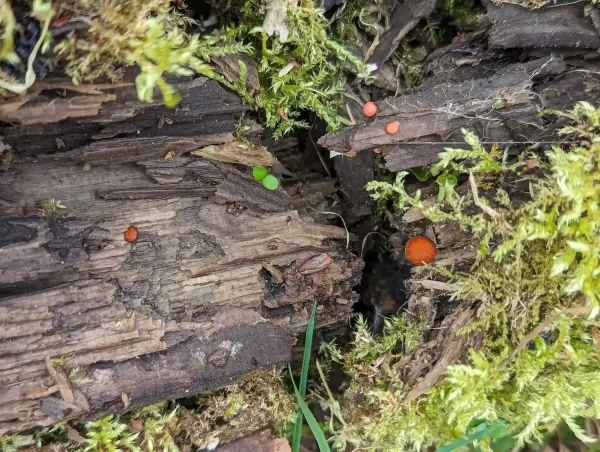
Woodland Trail, Strumpshaw Fen – 7th April 2024
A few days later more aethalia had developed.
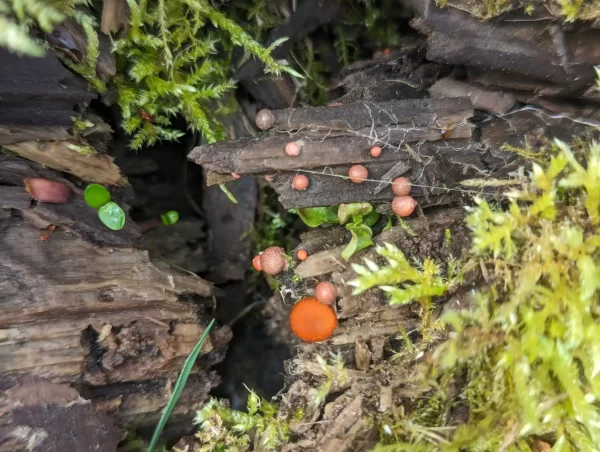
Woodland Trail, Strumpshaw Fen – 10th April 2024
And a week later
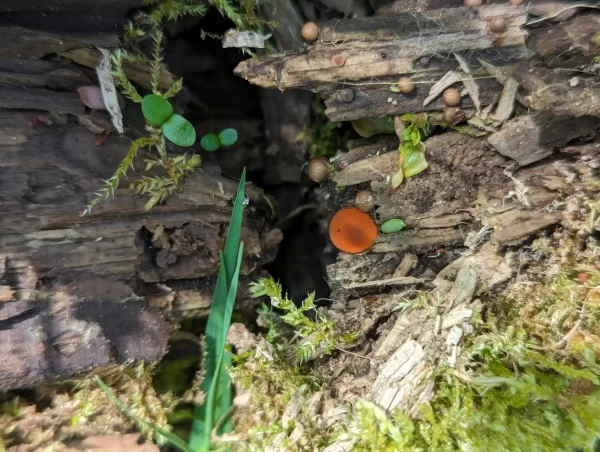
Woodland Trail, Strumpshaw Fen – 14th April 2024
Further along on the decaying rebatement were more maturing aethalia.
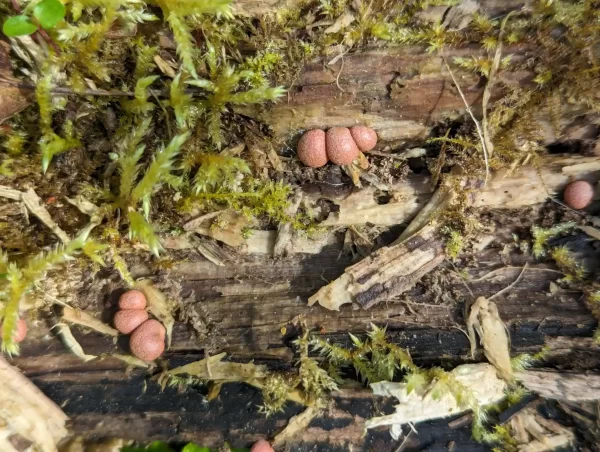
Woodland Trail – Strumpshaw Fen – 14th April 2024
Mid April
In mid-April—on a decaying trunk in The Dell—we saw a solitary rose coloured Lycogala whose peridium was broken exposing the scarlet goo inside.
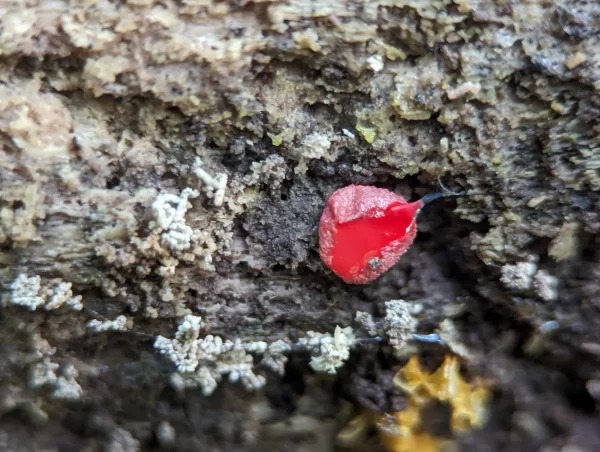
The Dell – Strumpshaw Fen – 14th April 2024
Near The Outpost—on one of the log piles near the path—we spotted a cluster of immature Stemonitis slime mould sporangia.
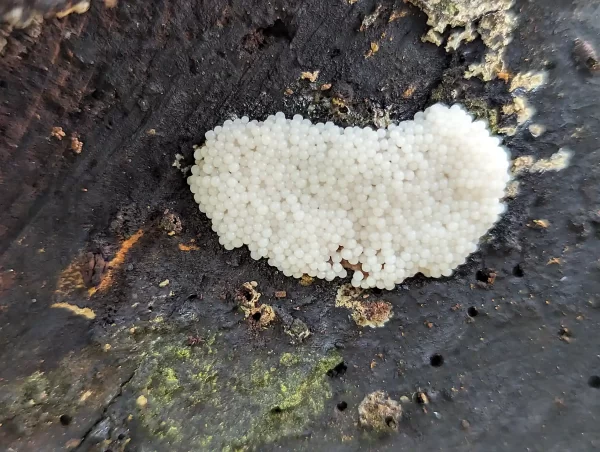
Near The Outpost – Strumpshaw Fen – 14th April 2024
Late April
At the Zen Zone the daughter—whose eyesight is much better than mine—spotted a log that was covered in groups of a cinnamon/pinkish buff growth with a multitude of white stalks with globular head.
The cinnamon/pinkish buff growth is certainly a mush of slime mould spore mass and the white stalks is a Stilbella—a fungus that parasitises slime moulds and they looked very similar to what my daughter found in August 2023 during her mycological survey of the reserve woodland.

The Zen Zone – Strumpshaw Fen – 27th April 2024
At Basecamp—on the same log that we found a super Stemonitis flavogenita—we spotted a small pale yellow Stemonitis slime mould plasmodium in the process of turning into young sporangia.
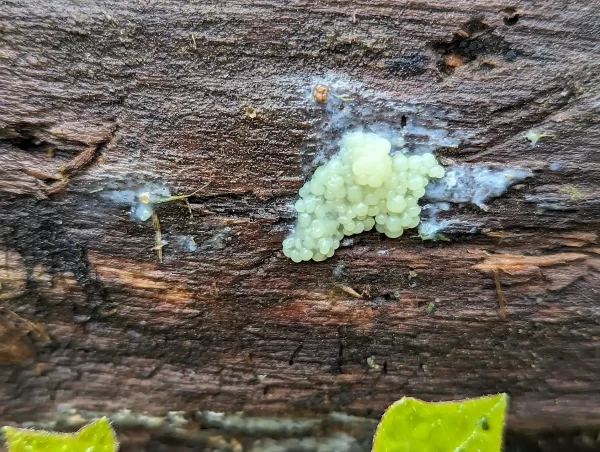
Basecamp – Strumpshaw Fen – 27th April 2024
The next day it hadn’t developed as expected.

Basecamp – Strumpshaw Fen – 28th April 2024
In the woodland—after The Dell and before the Gnarly Oak—we spotted a small woody ellipsoid covered in what could be Lachnum virgineum–the snowy disco. Running the image through Mycokey’s AI it is most likely L. virgineum but a small possibility that it’s Lachnum impudicum.
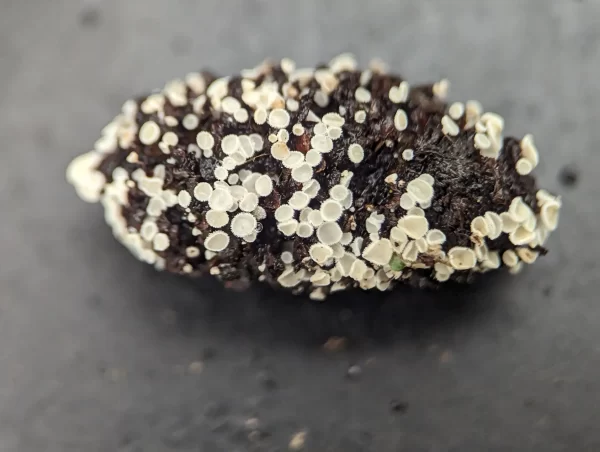
Near The Dell – Strumpshaw Fen – 27th April
Towards the end of the woodland trail we spotted some Hemitrichia.
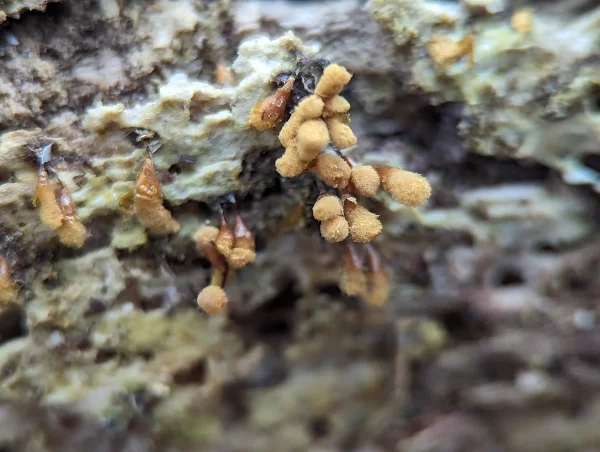
End of Woodland Trail – Strumpshaw Fen – 27th April 2024
Nearby in the root hollow of fallen tree the daughter spotted what is most likely Stemonitopsis typhina—it seems to fit the description in Bruce Ing’s identification handbook. [2]
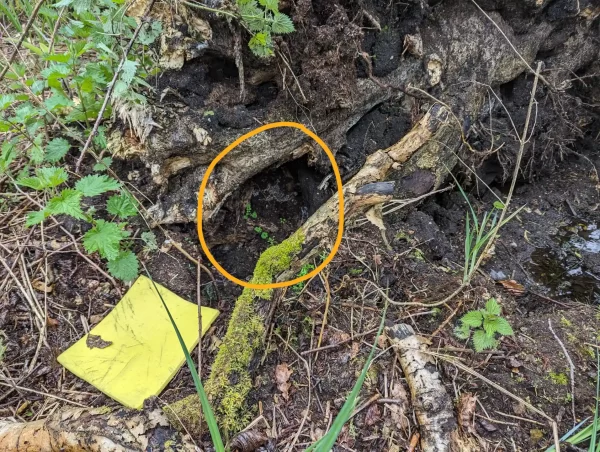
End of Woodland Trail – Strumpshaw Fen – 27th April 2024
In the photos below the maturing sporangia are turning a light vinaceous grey.
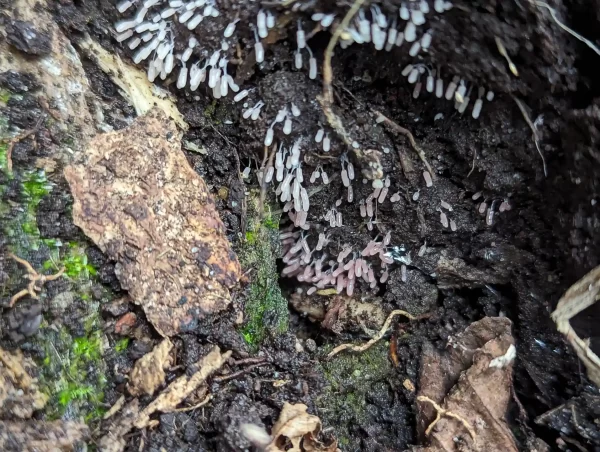
End of Woodland Trail – Strumpshaw Fen – 27th April 2024
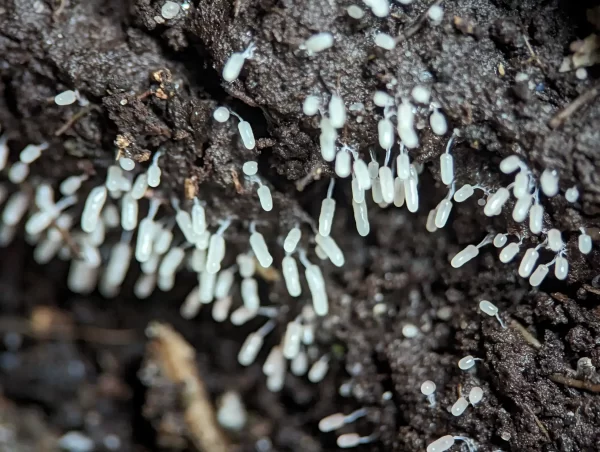
End of Woodland Trail – Strumpshaw Fen – 27th April 2024
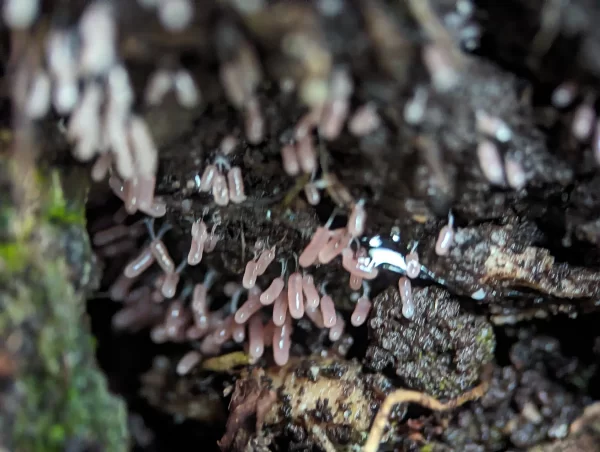
End of Woodland Trail – Strumpshaw Fen – 27th April 2024
The next day the sporangia had turned fuscous.
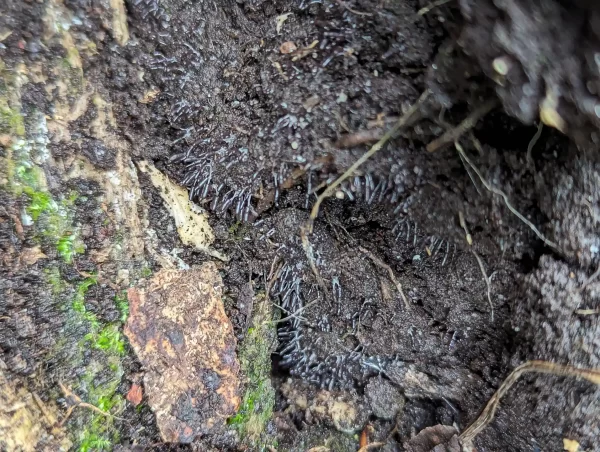
End of Woodland Trail – Strumpshaw Fen – 28th April 2024
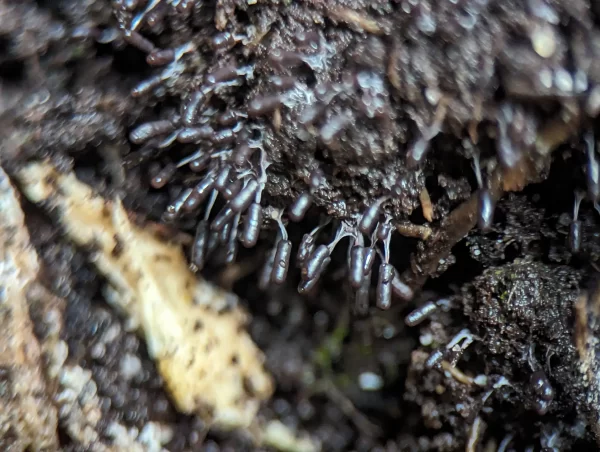
End of Woodland Trail – Strumpshaw Fen – 28th April 2024
EDIT 05.05.2024 – A week later the peridia had gone exposing the pale mouse-grey spore masses.
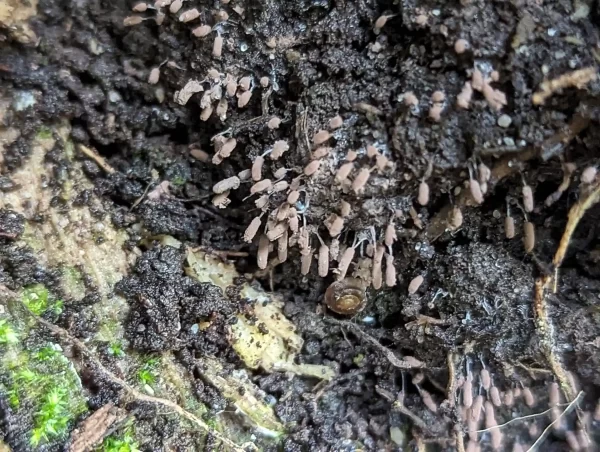
End of Woodland Trail – Strumpshaw Fen – 5th May 2024
[1] Myxomycetes: Biology, Systematics, Biogeography and Ecology (Steven L. Stephenson and Carlos Rojas).
[2] The Myxomycetes of Britain and Ireland – Bruce Ing.